The Oki Islands, The Exile of Emperor Go-Toba by Samurai: A Political Drama in Medieval Japan
A 50-minute flight from Itami Airport in Osaka, the Oki isolated Islands in Shimane Prefecture, a UNESCO World Geopark, are blessed with abundant nature. Since ancient times, the islands have been called the "Islands of the Deities." Japan's oldest books, Kojiki and Nihonshoki, describe the creation of the Oki Islands by two deities, Izanagi and Izanami, following Onogoro Island, Awajishima Island, and Shikoku. The Oki Islands have also witnessed turning points in Japanese history.
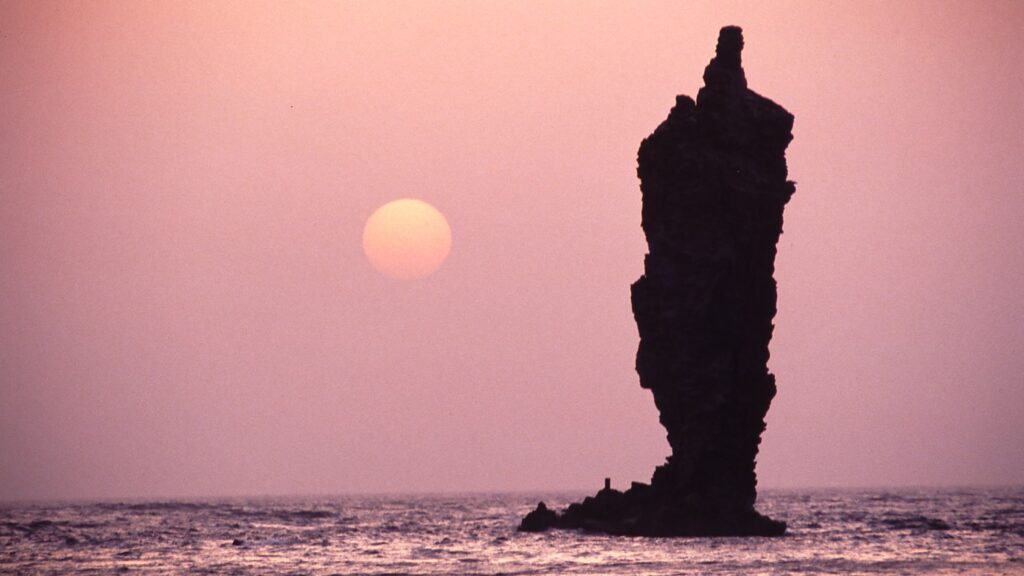
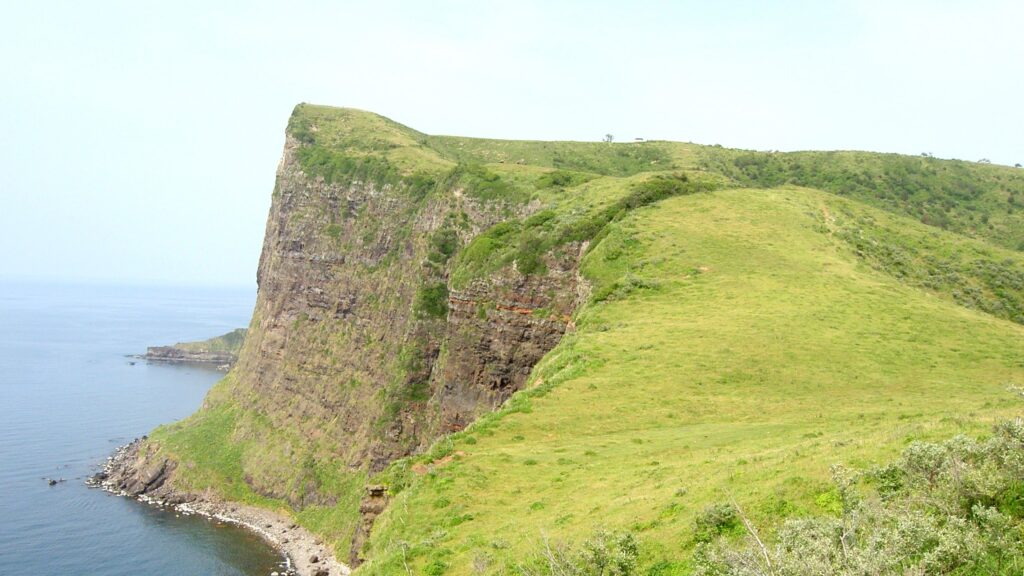

Two Emperors Who Denied the Rise of the Samurai
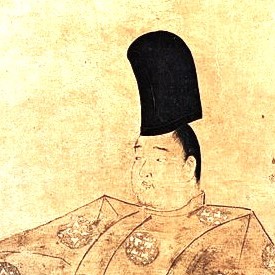

During the Kamakura period (1185-1333), when the first samurai government was established by Minamoto Yoritomo (1147-1199, 源頼朝) in Kamakura, and its influence expanded to encompass nationwide governance, two emperors emerged to restore rule from samurai to the emperor. One was the 82nd Emperor Go-Toba (1180-1239, 後鳥羽天皇) and the other one was the 96th Emperor Go-Daigo (1288-1339, 後醍醐天皇).
The First Emperor in History to be Exiled by the Samurai
In 1221, the Jokyu Rebellion broke out. Emperor Go-Toba ordered the overthrow of the regent Hojo Yoshitoki (1163-1124, 北条義時), who had been in control of the Kamakura shogunate. Emperor Go-Toba intended to restore imperial rule over the nation. However, he was defeated and subsequently exiled to one of the Oki Islands, where he passed away. This rebellion, ironically, prompted the samurai government, which had previously governed only eastern Japan centered in Kamakura, to extend its control over the entire country.
Enthronement without Sword, one of the Three Imperial Regalia
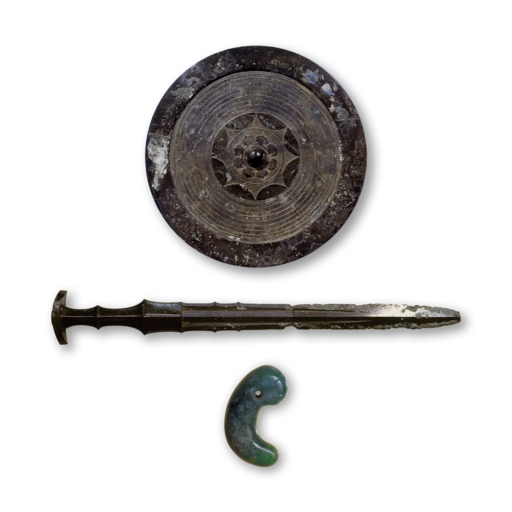
The Three Imperial Regalia sank into the sea with the 81st Emperor Antoku (1178-1185, 安徳天皇) during the Genpei War between the Taira and Minamoto clans. The mirror and the magatama (jewel) in a chest floated upward and were retrieved. On the other hand, the sword sank into the deep sea. The prolonged absence of the emperor from the palace was not permitted, but the Three Imperial Regalia was essential for the next enthronement. Emperor Go-Toba ascended to the throne without the sword at the age of three, employing the concept that the Three Imperial Regalia would surely return to the emperor later. This marked the beginning of his tumultuous life. This event appeared to instill an inferiority complex in Emperor Go-Toba, leading him to dedicate himself to crafting swords. The chrysanthemum crest carved by Emperor Go-Toba with a sword is the origin of the Imperial Chrysanthemum crest.
A Versatile Monarch
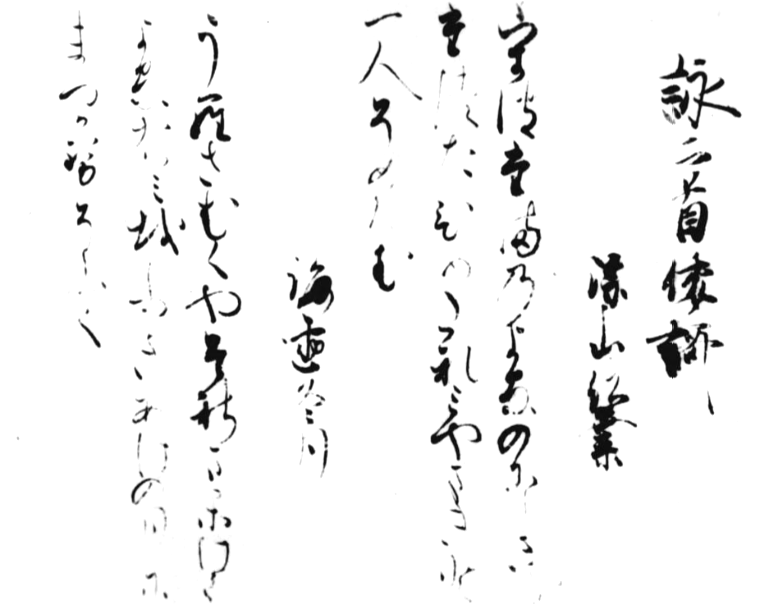
by Emperor G-Toba
@ 尾上八郎 編『新古今和歌集新抄』,明治書院,昭和16. NDL
The young Emperor Go-Toba had the ability of both literary and material arts. He was excellent not only in the royal court culture such as Waka (Japanese poetry), calligraphy, paintings, and traditional instruments of wind and string, but also in sumo wrestling, Kasagake (horseback archery), swordsmanship, and other material arts. He was also well-known as Kemari (a Japanese game of football). In 1200, he ordered several poets to create 100 Waka poems and report them to the Imperial Palace. Taking this opportunity, he studied and devoted himself to Waka, and quickly got quite good at it. The following year, in 1201, he presided over the unprecedented contest of 1,500 Waka poems. After that, he ordered the compilation of the New Kokin Wakashū (New Collection of Ancient and Modern Waka Poems). He seemed to aim for its completion in 1205, 300 years after the completion of the Kokin Wakashū. The style of the New Kokin Wakashū is “the subtle and profound (a deep and faint beauty that does not appear in words)” and “sentiment with artistic sensibility (an allusive atmosphere of loneliness in gorgeousness)” while respecting the tradition of the court culture. In 1205, the feast to celebrate its completion was held, which was the 26-year-old young Emperor Go-Toba’s brilliant successful accomplishment.
The Founder of the Kamakura Shogunate was Destroyed within Only Three Generations
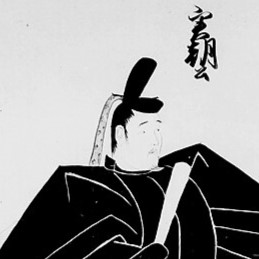
@ Wikimedia commons
The third Shogun of the Kamakura Shogunate, Minamoto Sanetomo (1192-1219, 源実朝), exhibited a greater inclination toward courtly cultures, such as Waka, than valuing a relationship with the rugged Eastern samurai. This marked the beginning of a harmonious relationship with the Retired Emperor Go-Toba, or Go-Toba-In, through Waka. Additionally, Sanetomo married a daughter of Go-Toba-In’s cousin. In this situation, his mother Masako, and the regent, Hojo Yoshitoki, grew concerned that Go-Toba-In was influencing Sanetomo. On the 27th of January in 1219, a significant incident occurred. Sanetomo fell victim to a fatal attack by his nephew while descending the stone steps at the Tsurugaoka Hachimangu Shrine, where he was to be congratulated on his new appointment as Minister of the Right - the highest position in the Imperial Court. The Kamakura Shogunate was shocked by the assassination of the Shogun, a symbol of power, as well as the astonishment of Go-Toba-In. At this juncture, the lineal descent of the Minamoto clan to an end.
Rebellion Erupt
After the death of Sanetomo, the internal strife in the Kamakura shogunate intensified. The war escalated, with the flames spreading to the emperor's private area in the palace in Kyoto. Here, identifying Hojo Yoshitoki as the true instigator of the chaos, Go-Toba-In issued a decree to defeat him. In defiance, the Shogunate began its march toward Kyoto. Amid a fierce battle, the Imperial Army suffered a crushing defeat in the Battle of Kisogawa, allowing the Shogunate forces to invade Kyoto by crossing the Uji River. The conflict lasted for only 20 days.
Decline of Emperor's Rule
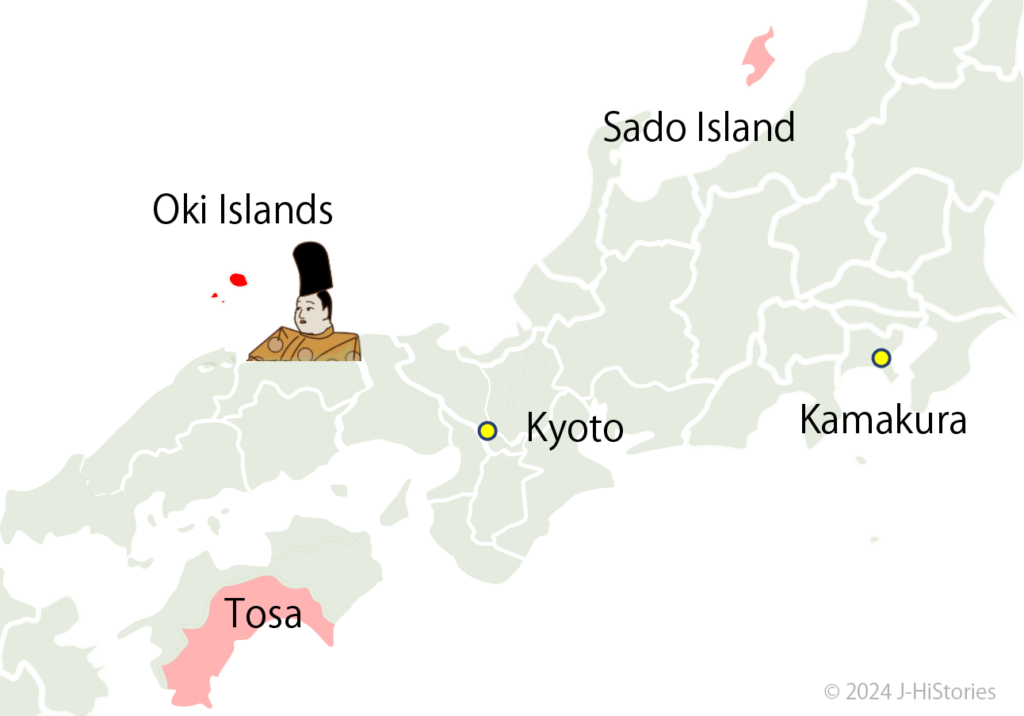
The postwar actions taken by the Shogunate were carried out based on Samurai principles and proved to be exceedingly severe. The three Retired Emperors faced exile: Go-Toba-In to the Oki Islands, his eldest son, Tsuchimikado-In to Tosa, and his second son Juntoku-In to Sado Island. Close associates of Go-Toba-In faced beheading, and the nearly 3,000 private estates belonging to him and other court nobles were seized by the Shogunate. This rebellion marked a pivotal moment in the Japanese government system, which had been led by the emperor for more than 1,000 years, and saw the emergence of the Samurai government as the national ruler.
To the Oki Islands
Upon his arrival at the Oki Islands, Go-Toba-In composed the “One Hundred Poems of Exile.” Some of the poems expressed his deep-rooted despair, his compassionate gaze toward ordinary people's lively lives, and his loneliness and nostalgia for Kyoto. He also initiated a major revision of the "New Kokin Wakashū," which he had compiled in his youth. He completed the "New Kokin Wakashū Oki version" by excluding his own 383 poems that were considered less excellent. Believing in the immortality of court culture, he continued his dedication to Waka, but he passed away at 60 on the Oki Islands. Go-Toba-In’s Waka:
It seems to me that humans are both endearing and resentful. To this me who is troubled because I think the world is a boring place. (人も惜し人もうらめしあぢきなく世を思ふゆゑにものを思ふ身は)
His mortification seems to ooze out of this Waka poem.
Emperor Go-Toba Timeline
| 1180 | Emperor Antoku ascended to the throne | - | Heian Period |
| 1180 | Minamoto Yoritomo raised an army to attack Kiyomori and his family | - | |
| 1180 | Emperor Go-Toba was born | Age=1 | |
| 1183/07 | Taila Kiyomori's family escaped from Kyoto attacked by Minamoto forces | 2 | |
| 1183/09 | Emperor Go-Toba ascended to the trhone | 3 | |
| 1185 | Emperor Antoku and the Imperial Sword sank into the sea | 5 | |
| 1185 | Minamoto Yoritomo established Kamakura Shogunate | 5 | Kamakura Period |
| 1192 | Minamoto Yoritomo assumed the first Shogun of the Kamakura Shogunate | 12 | |
| 1198 | Emperor Go-Toba abdicated to Emperor Tsuchimikado and started his cloister government | 18 | |
| 1199 | Go-Toba-In began to hold poetry parties | 19 | |
| 1199/01 | Minamoto Yoritomo passed away | 19 | |
| 1199/01 | Minamoto Yoriie assumed the 2nd Shogun of the Kamakura Shogunate (Age=18) | 19 | |
| 1201/11 | Go-Toba-In issued an order to compile an imperial anthology of the New Kokin Wakashu | 21 | |
| 1203 | Minamoto Sanetomo assumed the 3rd Shogun of the Kamakura Shogunate | 23 | |
| 1204 | Minamoto Sanetomo took a daughter of Go-Toba-In's cousin as his wife | 24 | |
| 1207 | Shinran exiled to Echigo, Hōnen left Kyoto by Go-Toba-in | 27 | |
| 1219/02/13 | Minamoto Sanetomo was assasinated | 39 | |
| 1221/05/14 | Go-Toba-In raised an army against Kamakura Shogunate (The Jokyu War) | 41 | |
| 1221/07/09 | Go-Toba-In was exiled to Oki Islands | 41 | |
| 1239 | Go-Toba-In passed away | 59 | |
| 1288 | Emperor Go-Daigo was born | - |
Recommendations to visit
Oki Shrine
- Access from Osaka: A 45-minute flight from Osaka Itami Airport to the Oki Island Global Geopark Airport. Take a bus to Saigo bus stop, then take a high-speed ferry to Hishiura Port. Then 10 min drive. >> details
Go-Toba-In Museum
- Access from Osaka: A 45-minute flight from Osaka Itami Airport to the Oki Island Global Geopark Airport. Take a bus to Saigo bus stop, then take a high-speed ferry to Hishiura Port. Then 10 min drive. >>details


